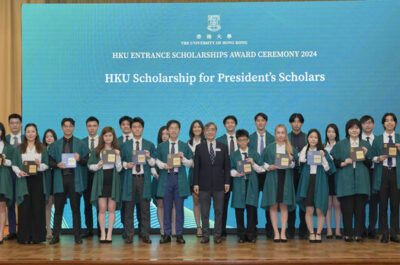In the travel and tourism industry, distinguishing between sustainable tourism and balanced tourism growth is crucial. While often used interchangeably, they serve distinct roles in promoting a responsible future.
In the rapidly growing travel and tourism industry, there is a need to distinguish between sustainable tourism and balanced tourism growth.
While these terms are often used interchangeably, they have distinct meanings and implications. Understanding the difference between sustainable tourism and balanced tourism growth is crucial for stakeholders in the industry to make informed decisions and contribute to a more responsible and sustainable future.
Definition of Sustainable Tourism and Balanced Tourism Growth
Sustainable tourism refers to a holistic approach to tourism that aims to minimize its negative impacts on the environment, society, and economy. It involves practices that conserve natural resources, protect biodiversity, and promote the well-being of local communities. On the other hand, balanced tourism growth focuses on achieving a harmonious and equitable distribution of tourism benefits. It aims to manage tourism’s impact on destinations by minimizing seasonality effects and ensuring the sustainable development of local communities.
Importance of Understanding the Difference Between Sustainable Tourism and Balanced Tourism Growth in the Travel and Tourism Industry
The travel and tourism industry plays a significant role in global economies, but it also has the potential to cause harm if not managed responsibly. Understanding the difference between sustainable tourism and balanced tourism growth is essential for industry professionals, policymakers, and travelers alike. It allows for the development of strategies and initiatives that can mitigate negative impacts, support local communities, and preserve natural and cultural resources. By embracing both concepts, the industry can achieve long-term sustainability and create a positive impact on the destinations it operates in.
Sustainable Tourism: Definition and Key Principles
Definition of Sustainable Tourism
Sustainable tourism is a concept that encompasses various principles and practices aimed at minimizing the negative impacts of tourism on the environment, society, and economy. It involves the responsible use of resources, the preservation of cultural heritage, and the promotion of social well-being. Sustainable tourism seeks to strike a balance between economic development, environmental conservation, and socio-cultural authenticity.
Key Principles of Sustainable Tourism
1. Environmental Conservation
One of the core principles of sustainable tourism is environmental conservation. It recognizes the importance of protecting natural resources, reducing pollution, and mitigating the carbon footprint of tourism activities. Sustainable tourism practices include the use of renewable energy, waste management systems, and the protection of fragile ecosystems.
2. Socio-cultural Authenticity
Sustainable tourism also emphasizes the preservation and promotion of socio-cultural authenticity. It recognizes the value of local cultures, traditions, and heritage and seeks to engage and involve local communities in tourism activities. This principle encourages travelers to respect local customs, support local businesses, and participate in community-based initiatives.
3. Economic Benefits for Local Communities
Another key principle of sustainable tourism is the generation of economic benefits for local communities. Sustainable tourism aims to create employment opportunities, support small businesses, and contribute to the overall economic development of destinations. This principle ensures that tourism benefits are distributed equitably and that local communities are active participants in the tourism value chain.
Long-term Sustainability and Preservation of Natural and Cultural Resources
The overarching goal of sustainable tourism is to ensure the long-term sustainability and preservation of natural and cultural resources. By adopting sustainable practices, destinations can minimize the negative impacts of tourism, protect their unique heritage, and create a positive legacy for future generations.
Balanced Tourism Growth: Definition and Key Principles
Definition of Balanced Tourism Growth
Balanced tourism growth focuses on managing the impact of tourism on destinations by achieving a harmonious and equitable distribution of tourism benefits. It aims to minimize seasonality effects, manage carrying capacity, and ensure the sustainable development of local communities. Balanced tourism growth recognizes the need for tourism to contribute to the overall well-being of destinations without causing harm.
Key Principles of Balanced Tourism Growth
1. Equitable Distribution of Tourism Benefits
The principle of equitable distribution of tourism benefits is central to balanced tourism growth. It aims to ensure that the economic benefits of tourism reach all segments of society, including marginalized communities. This principle calls for the involvement of local stakeholders in decision-making processes and the development of tourism policies that prioritize the needs of the community.
2. Minimizing Seasonality Effects
Balanced tourism growth seeks to minimize the negative impacts of seasonality on destinations. It promotes strategies such as diversification of tourism products, the development of off-peak season attractions, and the promotion of year-round tourism experiences. By reducing dependency on peak seasons, destinations can achieve a more balanced flow of tourists throughout the year.
3. Managing Carrying Capacity
Managing carrying capacity is another key principle of balanced tourism growth. It involves assessing and monitoring the maximum number of tourists that a destination can sustainably accommodate without compromising its natural and cultural resources. Implementing measures such as visitor quotas, infrastructure development, and visitor management strategies helps ensure that tourism growth does not exceed the capacity of the destination.
Sustainable Development of Destinations and Optimization of Economic Benefits
Balanced tourism growth emphasizes the sustainable development of destinations and the optimization of economic benefits. It recognizes that tourism should be a catalyst for positive change and economic growth in communities. By adopting strategies that promote sustainable development, destinations can harness the economic potential of tourism while protecting their natural and cultural assets.
The Difference Between Sustainable Tourism and Balanced Tourism Growth
Understanding the Distinction Between Sustainability and Balanced Growth
While sustainable tourism and balanced tourism growth share common goals, they differ in their approaches and focus areas. Sustainable tourism primarily addresses the environmental and socio-cultural impacts of tourism, aiming to minimize harm and promote responsible practices. On the other hand, balanced tourism growth focuses on managing the overall impact of tourism on destinations, ensuring an equitable distribution of benefits and managing carrying capacity.
Comparative Analysis of the Principles and Objectives of Sustainable Tourism and Balanced Tourism Growth
A comparative analysis of the principles and objectives of sustainable tourism and balanced tourism growth reveals both overlapping areas and distinct features. Both concepts aim to achieve long-term sustainability, support local communities, and protect natural and cultural resources. However, sustainable tourism places a stronger emphasis on environmental conservation and socio-cultural authenticity, while balanced tourism growth prioritizes the equitable distribution of benefits and the management of tourism impacts.
Overlapping Areas and Potential Conflicts Between the Two Concepts
While sustainable tourism and balanced tourism growth have distinct focuses, there are overlapping areas where they align and complement each other. For example, both concepts recognize the importance of supporting local communities and minimizing negative impacts on the environment. However, conflicts may arise when managing the carrying capacity of a destination while ensuring sustainable economic growth. Striking a balance between these two concepts requires careful planning, stakeholder engagement, and adaptive management strategies.
Environmental Aspects
Environmental Impacts of Tourism
Tourism can have significant environmental impacts, including pollution, habitat degradation, and depletion of natural resources. The carbon emissions from transportation, the excessive use of water and energy, and the generation of waste are among the key contributors to these impacts. It is essential to address these environmental challenges to ensure the long-term sustainability of tourism.
Sustainable Tourism Practices to Mitigate Environmental Impacts
To mitigate the environmental impacts of tourism, sustainable practices are crucial. These practices include:
1. Reducing Carbon Emissions
Promoting sustainable transportation options, such as public transportation, cycling, and walking, can help reduce carbon emissions from tourism activities. Encouraging the use of fuel-efficient vehicles and supporting initiatives like carbon offset programs also contribute to the reduction of greenhouse gas emissions.
2. Conserving Natural Resources
Efficient use of water and energy is vital for sustainable tourism. Implementing water-saving measures, such as installing low-flow faucets and toilets, and adopting energy-efficient technologies can significantly reduce the environmental footprint of tourism operations.
3. Protecting Biodiversity
Preserving biodiversity is a critical aspect of sustainable tourism. Protecting natural habitats, promoting responsible wildlife viewing practices, and supporting conservation initiatives can help safeguard fragile ecosystems and the species they support.
4. Promoting Sustainable Transportation Options
Encouraging the use of sustainable transportation options, such as trains or electric vehicles, can reduce the carbon footprint associated with travel and transportation at destinations. Additionally, promoting public transportation and creating infrastructure that supports walking and cycling can contribute to more sustainable tourism practices.
By implementing these sustainable tourism practices, destinations can mitigate the environmental impacts of tourism and contribute to the preservation of natural resources.
Socio-cultural Aspects
Socio-cultural Impacts of Tourism
Tourism can have both positive and negative socio-cultural impacts on destinations and local communities. Positive impacts include the preservation and promotion of cultural heritage, the exchange of ideas and knowledge, and the promotion of cultural understanding. However, tourism can also lead to cultural commodification, loss of authenticity, and social disruption if not managed responsibly.
Preserving and Promoting Local Cultures, Traditions, and Heritage
Sustainable tourism recognizes the importance of preserving and promoting local cultures, traditions, and heritage. By engaging local communities and respecting their rights and traditions, tourism can become a catalyst for cultural exchange and understanding. Here are some key strategies to achieve this:
1. Engaging Local Communities
Involving local communities in the decision-making process and tourism planning can empower them and ensure that their perspectives and interests are taken into account. Engaging local communities in tourism development projects fosters a sense of ownership and allows for the co-creation of authentic tourism experiences.
2. Respecting Rights and Traditions
Respect for the rights and traditions of local communities is crucial in sustainable tourism. Travelers should be mindful of cultural norms, practices, and etiquette when visiting destinations. This includes dressing appropriately, seeking permission before taking photographs, and avoiding exploitative practices that commodify culture.
3. Supporting Local Businesses and Artisans
Supporting local businesses, artisans, and craftspeople is an effective way to promote socio-cultural authenticity. By purchasing locally made products, visiting local markets, and dining at local restaurants, travelers can contribute to the economic well-being of the community and help preserve traditional craftsmanship.
By implementing these strategies, destinations can preserve their cultural heritage, empower local communities, and promote a more authentic and meaningful tourism experience.
Economic Aspects
Economic Benefits of Sustainable Tourism and Balanced Tourism Growth
Both sustainable tourism and balanced tourism growth have significant economic benefits for destinations and local communities. These benefits include:
1. Generating Employment Opportunities and Supporting Small Businesses
Sustainable tourism practices create employment opportunities, particularly for local communities. By engaging local residents in tourism-related activities, destinations can reduce poverty, enhance income distribution, and improve the overall quality of life. Sustainable tourism also supports small businesses, as it promotes the consumption of locally produced goods and services.
2. Contributing to the Overall Economic Development of Destinations
Tourism, when managed sustainably, can be a powerful driver of economic development. It can stimulate investment in infrastructure, create business opportunities, and generate tax revenues that can be reinvested in local communities. The economic benefits of tourism contribute to poverty alleviation, diversification of the economy, and the overall well-being of destinations.
Strategies, Initiatives, and Positive Outcomes for Both Sustainable Tourism and Balanced Tourism Growth
Various strategies and initiatives have been implemented to promote both sustainable tourism and balanced tourism growth. Governments, tourism organizations, and industry stakeholders play a crucial role in driving these initiatives. Some examples include:
- Developing destination management plans that incorporate sustainability principles
- Encouraging responsible tourism practices through education and awareness campaigns
- Implementing certification programs, such as eco-labels, to identify sustainable tourism businesses
- Promoting community-based tourism initiatives that empower local communities
- Engaging in public-private partnerships to support sustainable tourism projects
These strategies and initiatives have resulted in positive outcomes, including improved destination management, increased community engagement, and enhanced visitor experiences.
Case Studies
Examples of Destinations or Businesses with Successful Sustainable Tourism Practices
Several destinations and businesses have successfully implemented sustainable tourism practices. One example is Costa Rica, which has become a global leader in sustainable tourism. The country has implemented measures to protect its biodiversity, promote community-based tourism, and reduce carbon emissions. Costa Rica’s sustainable tourism model has resulted in positive economic, environmental, and social outcomes.
Another example is the Soneva Resorts in the Maldives and Thailand. These luxury resorts have integrated sustainability into their operations, focusing on energy efficiency, waste management, and community development. The resorts strive to create a positive impact on the environment and support local communities through various initiatives.
Strategies, Initiatives, and Positive Outcomes for Both Sustainable Tourism and Balanced Tourism Growth
Strategies, initiatives, and positive outcomes for both sustainable tourism and balanced tourism growth can be seen in various destinations worldwide. For instance, the city of Barcelona in Spain has implemented measures to manage the number of tourists visiting its popular attractions. Through visitor quotas, the city aims to balance the number of tourists with the carrying capacity of the destination, thus reducing overcrowding and preserving the quality of the visitor experience.
In New Zealand, the Department of Conservation has implemented the Great Walks Conservation Project. This initiative aims to manage the impact of tourism on the country’s iconic hiking trails by limiting the number of walkers, implementing conservation measures, and ensuring the equitable distribution of benefits to local communities.
These case studies demonstrate the positive outcomes that can be achieved through sustainable tourism and balanced tourism growth practices, inspiring other destinations and businesses to adopt similar approaches.
Personal Experience: Embracing Sustainable Tourism Practices
Exploring Ecotourism in Costa Rica
During a recent trip to Costa Rica, my family and I had the opportunity to immerse ourselves in the country’s commitment to sustainable tourism. Our stay at an eco-lodge in the heart of the rainforest not only allowed us to witness the breathtaking natural beauty but also provided insight into the principles of sustainable tourism in action.
Environmental Impact and Conservation Efforts
Engaging in guided nature walks, we learned about the lodge’s efforts to minimize its environmental footprint. The use of renewable energy sources, waste reduction strategies, and reforestation projects showcased their dedication to preserving the fragile ecosystem.
Socio-cultural Engagement and Support
Interacting with local communities highlighted the lodge’s emphasis on socio-cultural authenticity. Through initiatives supporting indigenous artisans and cultural exchanges, we experienced firsthand the positive impact of responsible tourism on preserving traditions and empowering local residents.
Economic Benefits and Community Development
Furthermore, the economic benefits generated by the lodge directly contributed to the well-being of the surrounding communities. By providing employment opportunities and sourcing supplies locally, the lodge played a pivotal role in fostering sustainable economic growth.
Our experience in Costa Rica underscored the significance of embracing sustainable tourism practices. It exemplified the harmonious coexistence of environmental preservation, socio-cultural authenticity, and economic prosperity, reinforcing the difference between sustainable tourism and balanced tourism growth.
Challenges and Opportunities
Challenges in Achieving Sustainable Tourism and Balanced Tourism Growth
Despite the progress made in promoting sustainable tourism and balanced tourism growth, several challenges persist. Some of the key challenges include:
- Balancing the economic benefits of tourism with environmental and socio-cultural concerns
- Managing the impact of overtourism in popular destinations
- Ensuring local communities are active participants in tourism development and benefit from tourism activities
- Overcoming resistance to change from industry stakeholders who may prioritize short-term gains over long-term sustainability
Opportunities Arising from Sustainable Practices and Balanced Growth
While challenges exist, there are also significant opportunities arising from sustainable practices and balanced growth. These opportunities include:
- Enhancing the reputation and competitiveness of destinations through sustainable branding
- Stimulating innovation in the tourism industry, leading to the development of new products and services
- Fostering community empowerment and social inclusion through tourism-related initiatives
- Creating unique and authentic experiences that attract responsible travelers
By embracing these opportunities, destinations can position themselves as leaders in sustainable tourism and reap the associated economic, social, and environmental benefits.
Government and Industry Initiatives
Role of Governments, Tourism Organizations, and Industry Stakeholders in Promoting Both Sustainable Tourism and Balanced Tourism Growth
Governments, tourism organizations, and industry stakeholders play a pivotal role in promoting both sustainable tourism and balanced tourism growth. Their responsibilities include:
- Developing policies and regulations that support sustainable practices and balanced growth
- Providing financial incentives and support for businesses adopting sustainable practices
- Collaborating with local communities to ensure their involvement in tourism decision-making processes
- Educating and raising awareness among tourists, industry professionals, and the general public about the importance of sustainable tourism
- Facilitating partnerships and knowledge-sharing platforms to drive innovation and best practices in the industry
Initiatives, Policies, and Certifications Supporting Sustainable Practices and Balanced Growth
Numerous initiatives, policies, and certifications have been established to support sustainable practices and balanced growth in the travel and tourism industry.
With over 30 years of global travel and tourism expertise, Dr. Jens Thraenhart is the Founding Partner of 25-year-old bespoke strategy consulting firm Chameleon Strategies, the 2nd Vice Chair of the World Tourism Organization’s UNWTO Affiliate Members, the former Chief Executive Officer of the Barbados Tourism Marketing, Inc. (Visit Barbados), the former Executive Director of the Mekong Tourism Coordinating Office, the founder of private-sector-led tourism marketing organization Destination Mekong, and former Board Member of the Caribbean Tourism Organization (CTO).
Previously active in China, in 2009, he co-founded acclaimed marketing agency Dragon Trail and published the China Travel Trends books and website. Jens has also held leadership positions with Destination Canada and Fairmont Hotels & Resorts (now Accor).
As founder of the Destination Film Forum, he is also a big proponent of the power of storytelling, having been recognized as one of the top 10 Most Influential Leaders in Travel in 2022 by Travel Vertical, ranking first in the category of Creativity and Brand Storytelling, and served on the Jury of the Cannes Lion International Film Awards.
Other recognitions for his work include being one of the travel industry’s top 100 rising stars by Travel Agent Magazine in 2003, one of HSMAI’s 25 Most Extraordinary Sales and Marketing Minds in Hospitality and Travel in 2004 and 2005, one of the Top 20 Extraordinary Minds in European Travel and Hospitality in 2014, and honored as one of the Global Travel Heroes in 2021.
He completed his Doctor in Tourism Management at The Hong Kong Polytechnic University and graduated from Cornell University with a Masters in Hospitality Management.
He publishes his three tourism industry blogs: (1) Tourism-Campaigns.com; (2) BalancedTourism.com; (3) PurposePicks.com.




![[PR] PR_Ascott and Vimut Hospital_2024](https://www.traveldailynews.asia/wp-content/uploads/2024/04/PR-PR_Ascott-and-Vimut-Hospital_2024-400x265.jpg)































































